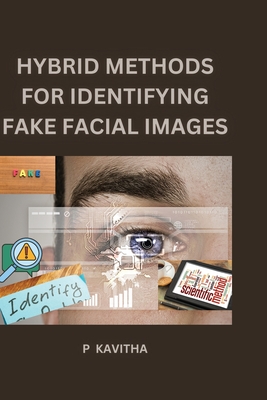You are here
Back to topHybrid Methods for Identifying Fake Facial Images (Paperback)
$35.00
Email or call for price
Email or call for price
Description
Hybrid methods for identifying fake facial images refer to the use of a combination of different techniques and approaches to determine the authenticity or manipulated nature of a facial image. With the increasing prevalence of image editing tools and deepfake technology, it has become essential to develop sophisticated methods to detect and differentiate between real and fake images.Hybrid methods typically incorporate both traditional computer vision techniques and advanced deep learning algorithms to analyze various aspects of the facial image. These methods aim to leverage the strengths of different approaches to achieve more accurate and robust detection of fake facial images.Here are some key components commonly used in hybrid methods for identifying fake facial images: 1. Metadata Analysis: Hybrid methods often begin by analyzing the metadata associated with the image, such as file properties, camera information, and editing history. This analysis can provide valuable insights into the authenticity of the image.2. Image Forensics: Techniques from digital image forensics are employed to detect traces of manipulation or tampering in the facial image. This may involve analyzing artifacts, inconsistencies, or statistical irregularities introduced during the editing process.3. Feature Extraction: Hybrid methods use computer vision techniques to extract various facial features, such as landmarks, texture patterns, and color information. These features can help in identifying potential anomalies or discrepancies in the image that may indicate manipulation.4. Deep Learning Models: Deep learning algorithms, such as convolutional neural networks (CNNs), are trained on large datasets of real and manipulated facial images. These models learn to differentiate between genuine and fake images by capturing patterns, textures, and contextual cues that are indicative of manipulation.5. Attention Mechanisms: Hybrid methods may incorporate attention mechanisms within deep learning models to focus on specific regions or features of the facial image that are more likely to be manipulated. Attention mechanisms can help to improve the accuracy and efficiency of the detection process.6. Multi-Modal Analysis: Hybrid methods often combine information from multiple sources or modalities, such as visual, audio, or physiological signals, to enhance the detection performance. For example, analyzing the audiovisual synchronization or monitoring physiological responses can provide additional clues about the authenticity of the facial image.7. Adversarial Detection: Considering the evolving nature of deepfake techniques, hybrid methods may include adversarial detection strategies. These involve training models to detect specific artifacts or patterns associated with deepfake generation algorithms, thus staying ahead of potential advancements in manipulation techniques.By combining these various techniques, hybrid methods aim to create more robust and accurate systems for identifying fake facial images. However, it's worth noting that the development of deepfake technology is a cat-and-mouse game, and the detection methods will continue to evolve alongside the creation of new manipulation techniques.
